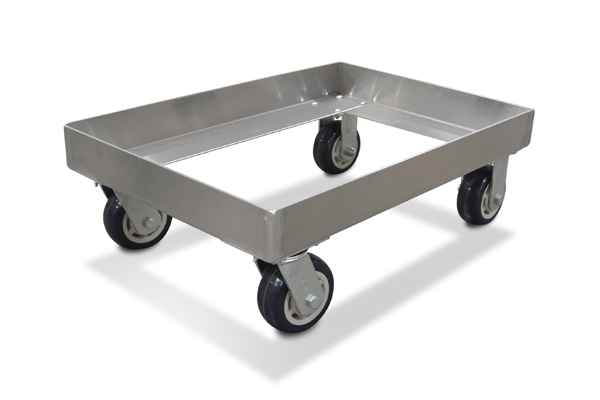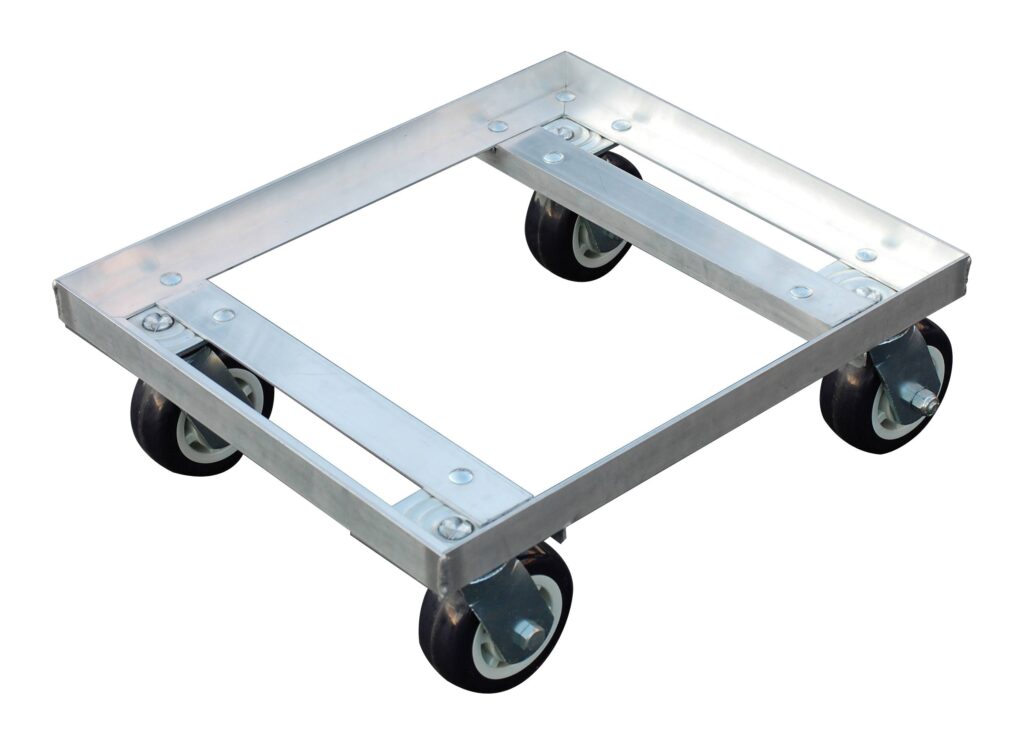
ELA Enterprises, LLC
Dollies come in all shapes and sizes. There doesn’t seem to be a “universal term” for the word dolly. In fact, it’s difficult to determine where and when the word originated. Often referred to as a hand truck, cart, roller dolly, 4 wheel dollies, or simply “wheels”, most agree that this is a very important piece of equipment. If you use dollies in your operation, you can appreciate the “heavy lifting” this work horse provides.
Application: Whether used to transport food trays, bakery trays, attached lid containers, large pallets, trash cans, or liquid containers, finding the right dolly will give you great flexibility. Investing in this relatively inexpensive piece of equipment typically pays for itself quickly; ROI is captured in a short period of time.
Caster: One of the most important things to consider is the type of caster. Determining which surfaces it will be used and the weight capacity, will help decide the type of caster needed. Some examples of surfaces to consider might be asphalt, cement, brick, uneven surfaces, carpet, grass and wet and dry surfaces. Once the load capacity and surface is determined, you can narrow down what type of caster (wheel) you need. There are various types of wheels such as rubber, polyurethane, plastic and phenolic and there are advantages to each.
Finding the right caster is very important, as it determines how easily and efficiently your dolly will transport your goods. The appropriate caster ensures a smooth ride, transporting items easily and efficiently. Once you determine load capacity and surface, your choices of casters will include a variety of wheel materials, wheel sizes, and types of bearings.
Material: Dollies can be produced from many different materials. Wood, plastic, steel, aluminum and stainless steel (to name a few) are the most common. Based on the environment, you will have several options to consider.
In a dry environment, you might consider wood, plastic, or a steel dolly with a powder coated finish. Steel is strong, and with proper care, lasts a very long time. In a wet environment, such as in food service, restaurants, and kitchens – stainless steel or an aluminum dolly is the most appropriate choice. These materials do not rust when in contact with moisture or water. In a food environment, proper care includes thorough washing on a regular basis.
Design: Food environments require a hygienic design. Using non-corrosive parts, toxic free materials and impervious surface finishes will ensure your choice meets the requirements of your county health departments. Operating a USDA facility, there are additional guidelines to consider (such as food harborage). The Occupational Safety and Health Administration (OSHA) requires that anything greater than 50 pounds use two or more people to lift the load. Breaking components down to 45 pounds or less to load onto a dolly, helps to keep your employees safe when handling heavy loads.
Dollies allow individuals to move extremely heavy items without the help of a crew. This versatile piece of equipment can be adapted to meet your needs. Larger tasks can be handled by fewer people. Workers can accomplish more and increase productivity without the necessity of adding more employees.

